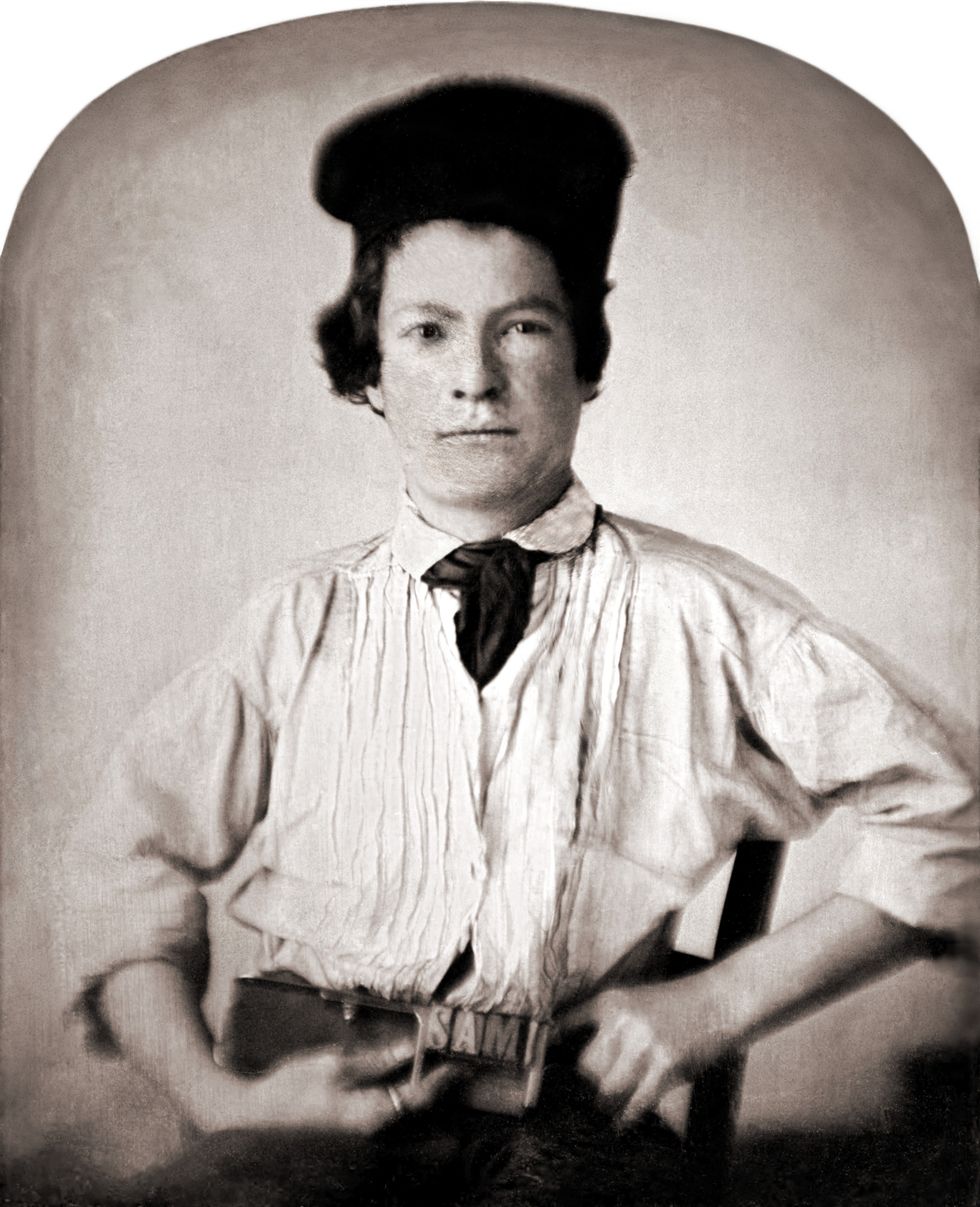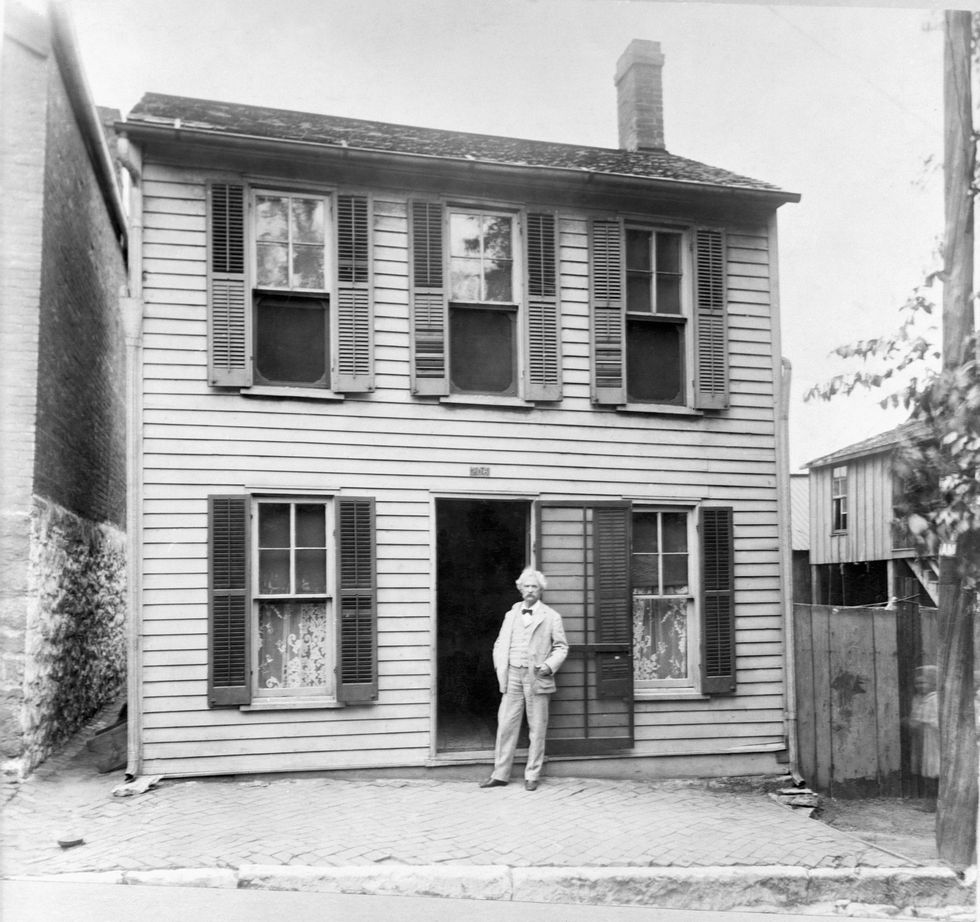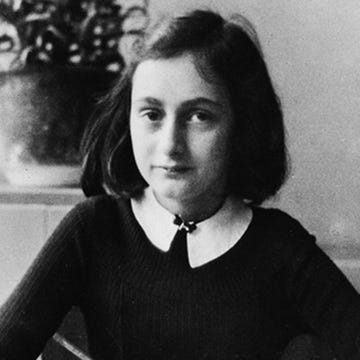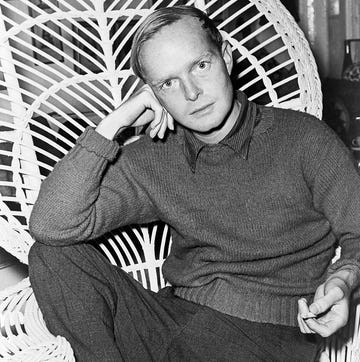Hannibal, Missouri made Mark Twain, and, in turn, Twain made Hannibal famous. Few American authors are as closely intertwined — and influenced — by their hometowns as Twain. The childhood years spent in this Missouri town gave birth to some of the most famous characters in American literature, an emotional and memory-filled well that Twain would return to again and again.
Twain came from humble origins
Samuel Langhorne Clemens was born in the tiny town of Florida, Missouri, on November 30, 1835, two weeks after Halley’s Comet made its closest approach to the Earth. He was the sixth of seven children born to John and Jane Clemens. He was a sickly youth, whose parents feared he might not survive, and the family was beset by the tragic early deaths of three of Twain’s siblings.
When Twain was 4 years old, his family moved to the Mississippi River port town of Hannibal, where John worked as a lawyer, storekeeper and judge. John also dabbled in land speculation, leaving the family’s finances often precarious. His son, who would become one of the wealthiest authors in America, would follow in his father’s financially-shaky footsteps as an adult and was prone to speculation and ill-advised investments that would repeatedly threaten his financial security.
Jane was a loving mother, and Twain would later note that he inherited his love of storytelling from her. His father couldn’t have been more different, and Twain later claimed that he had never seen the dour and serious John smile.
His years in Hannibal would be the most formative of his life
Hannibal would be immortalized as the town of “St. Petersburg” in Twain’s works. He would write of lazy days spent in the company of a group of loyal friends. They played games and spent hours and days exploring the surrounding area, including a cave just outside of town that was a favorite of Clemens’ real gang of friends, which would play a key role in Tom Sawyer as the cave where Tom Sawyer and Becky Thatcher nearly died.
Thatcher was based on Twain’s real-life childhood crush, Laura Hawkins. Like Twain, Hawkins had moved to Hannibal as a child, and her family lived on the same street as the Clemens family. She and Twain were schoolmates and sweethearts, and idealized versions of Laura made their way into several other Twain books, including The Gilded Age. Later in life, Twain and Hawkins rekindled their friendship, with Twain visiting with her in Hannibal and Hawkins traveling east to Twain’s Connecticut home just two years before his death.
Sawyer’s half-brother Sid was based on Twain’s younger brother Henry. The two were quite close, and when Twain began training as a riverboat pilot on the Mississippi, he encouraged Henry to join him. Tragically, Henry was killed in a steamboat explosion at the age of just 20. Twain never forgave himself, and Henry’s death haunted him for the rest of his life.
Twain said he based the character of Sawyer on himself and two childhood friends, John B. Briggs and William Bowen. But many believe that he nicked the character’s name from a hard-drinking, Brooklyn-born fireman named Tom Sawyer who Twain had befriended in the 1860s. Like Twain, Sawyer had worked on riverboats in his youth, and the pair bonded over a series of drinking benders and gambling adventures in San Francisco, Nevada and elsewhere.
READ MORE: The Unlikely Friendship of Mark Twain and Ulysses S. Grant
Another childhood friend was the inspiration for Huck Finn
Although Twain initially claimed to have invented the character entirely, he later admitted that Finn was based on Tom Blankenship. The son of the town drunkard, Blankenship was nonetheless idolized by the boys of Hannibal, who relished his sense of freedom and easy ways.
As Twain later wrote in his autobiography, “He was ignorant, unwashed, insufficiently fed; but he had as good a heart as ever any boy had. His liberties were totally unrestricted. He was the only really independent person — boy or man — in the community, and by consequence, he was tranquilly and continuously happy and envied by the rest of us.”
The character of Finn, first introduced in “Tom Sawyer” before getting his own book in 1884, was Twain’s most indelible creation — and his most controversial. While enormously influential and still popular more than a century after it was published, the book is also one of the most frequently banned in America, criticized for its use of coarse language, ethnic slurs and its depiction of the runaway enslaved person, Jim, which many consider racist.
The novel shows Twain dealing with the impact of American slavery
The Adventures of Huckleberry Finn was one of the first American novels to be written entirely using an English vernacular language and dialect, as Twain recalled both the sights and sounds of his youth. It was also Twain’s attempt to reconcile both the darkness and light of his Hannibal years, which were filled with happy childhood memories as well as darker ones, reflecting the realities of the often capriciously violent world of a riverboat town and the lasting effects of racism and slavery.
Twain later admitted he had grown up unquestioningly accepting slavery, before becoming an avowed advocate for Black rights later in life. Missouri was a slave state, and both Twain’s father and several Clemens family members owned enslaved people. As a young boy, Twain spent summers on his uncle’s farm, listening to stories told by its enslaved workers, including an old man named “Uncle Daniel.” Twain also drew on similar stories he heard from formerly enslaved people who worked for his sister-in-law in upstate New York after the Civil War to create his portrait of Jim, and a long-ago story of the Tom Blankenship’s brother’s secret assistance to a runaway enslaved person would inspire Finn’s relationship with Jim.
READ MORE: Helen Keller and Mark Twain Had an Unlikely Friendship That Spanned More Than a Decade
Twain’s childhood ended early
When young Twain was just 11, his father died, pushing the family to the brink of economic collapse. Twain was forced to leave school and worked a series of jobs before becoming a printer’s apprentice, where he put his burgeoning love of words into tactical practice by setting type. After stints working for his brother’s newspaper and other publishers in the Midwest and East, Twain fulfilled another childhood love fueled by his Hannibal days by becoming a Mississippi River boat pilot. This brief, though happy, phase of his early 20s was also where he acquired the pen name that millions would soon know him by: “Mark Twain,” a term used by captains to mark a water depth of two fathoms, indicating safe passage for their ships.
Although Twain would only work on the Mississippi for a few years before the start of the Civil War, that period, like those in Hannibal before them, left a lasting impression. Twenty years after his riverboat career ended, Twain took a nostalgic journey along the river to New Orleans, inspiring much of his 1883 book, Life on the Mississippi. And as he made his way back up along the river, he made a return visit home to Hannibal, back to where it all began.















